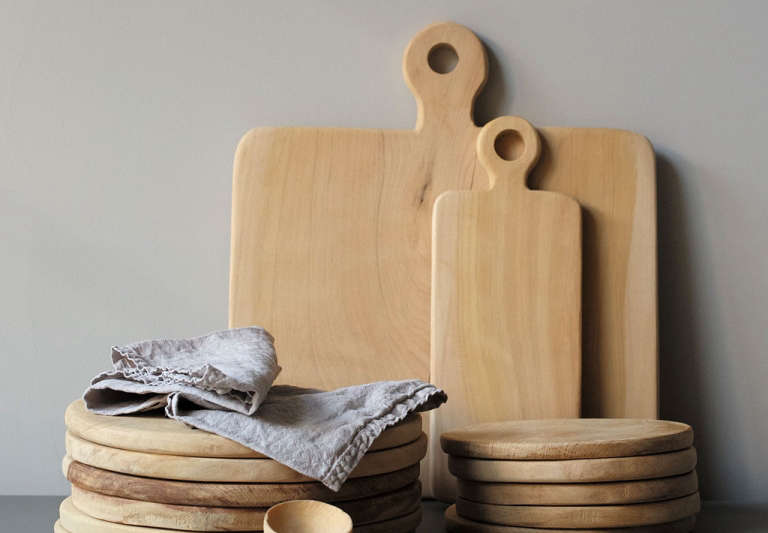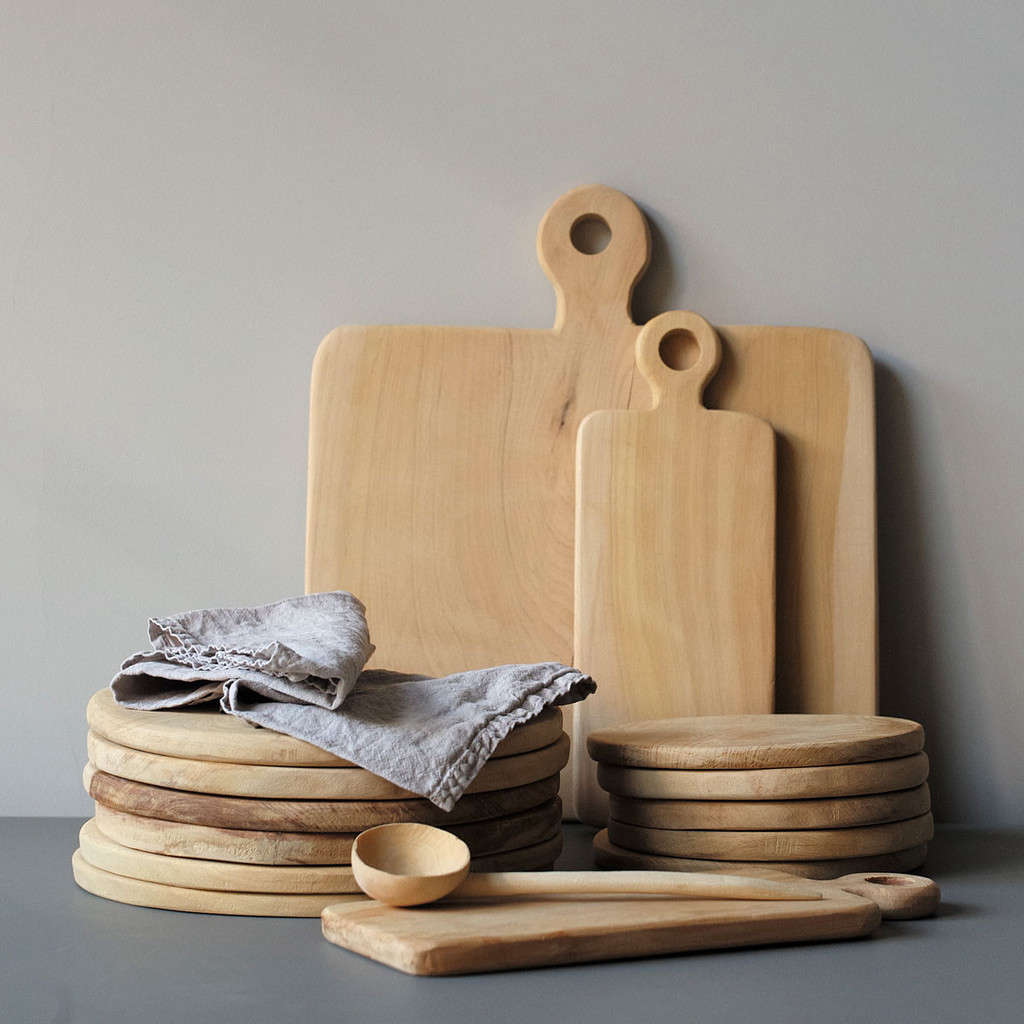
Welcome to Your Weekend Project, featuring how-tos and ideas from our archives for an organized and inspired home.
Like many in this field, I am a fan of Marie Kondo’s succinct thesis that everything is your house should “spark joy.” (See The Life-Changing Magic of Tidying Up). I admit, though, I’m having a really hard time applying this practice to my cutting boards.
Here’s the scenario: At one end of my kitchen, enshrined on a hand-forged brass nail, hangs a virgin Black Creek Mercantile Blackline Cutting Board. On the other end of the counter rest all the other boring cutting boards that I actually use. They do not spark joy, but I’m too afraid to mar my lovely Blackline board. What to do?
For guidance, I turned to Joshua Vogel, the very maker of my beloved Blackline board. Read on for his advice and instructions.
1. Prepping Your Board
Fortunately, it’s easy to maintain the look and longevity of your cutting board. But first, Josh recommends seasoning or treating your new board with several coats of protective, food-safe, mineral oil such as BCMT & Co. Board Oil; $35. (Note: Do not use plant-based oils such as olive oil as these will turn rancid.) Oil, which penetrates the wood fibers, acts as both a protective barrier and moisturizer for the board, allowing the wood to breathe while also resisting absorption.
First, make sure your board is completely dry. Pour a liberal amount of oil onto the wood and work into the surface with a clean cloth or brush. Leave to soak in the oil for at least a couple hours or overnight. Wipe of any excess and clean with a cloth. Repeat three times.
2. Cleaning Your Board
Once your board is oiled, all that’s needed to keep it clean is a mild soap and warm water. Never put your board into the dishwasher or apply harsh chemicals.
3. Maintaining Your Board
When your board starts to look dry, Josh recommends a quick reapplication of mineral oil or wax. No need to repeat the initial three coats. One should be sufficient to reinvigorate your board.
If your board has become excessively rough, you may also lightly sand it. Using a fine piece of sandpaper, gently buff the surface. Wipe clean and oil thoroughly. Remember that you are not trying to entirely remove the cutting marks—it is a cutting board after all—just smooth the surface a bit.
4. Board Don’ts
Never leave food on a board too long, particularly highly acidic foods like lemons, which can damage the wood. Never soak the board in water. Keep it away from excessive heat.
Five to Buy





N.B.: This post is an update; it was first published on Remodelista on May 12, 2016.
For more expert advice, see:






Have a Question or Comment About This Post?